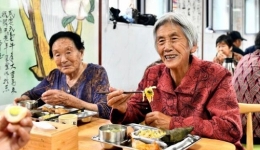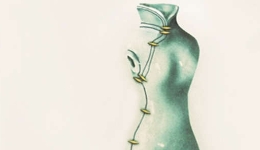Original title: This heavy bronze object of the Western Zhou Dynasty is deeply hidden in Nanda University
Xinhua Daily reporter Yu Feng
The Dake Ding in the Western Zhou Dynasty is known as one of the "three treasures of domestic bronze ware" (the other two are the Dayu Ding and Mao Gong Ding), and is now in Shanghai Museum. The seven small Ke Ding, which are matched with the big Ke Ding, are also extremely precious bronzes, which are collected in cultural and museum institutions at home and abroad, such as Shanghai Museum, Japan Heichuan Institute of Ancient Culture, the Palace Museum, Tianjin Museum, etc. Nanjing University Museum has a small tripod, which can be called the "treasure of the town and school" of this century famous school. Recently, as an important event of the 122nd anniversary of Nanjing University, "Nanyong, a city with rich experience and prosperous history, an exhibition of unearthed cultural relics of Nanjing University" was opened in Nanjing University Museum. More than 20 years after the last public exhibition, Xiaokeding met the public again.

Photographed by Zhao Yaling, reporter of Xiaokeding Xinhua Daily
In the exhibition hall, Xiaokeding was placed in the most prominent position. Zhao Dongsheng, deputy curator of Nanjing University Museum, said that the Xiaoke Ding was cast during the reign of Emperor Xiao of the Western Zhou Dynasty, which is equivalent to the end of the 10th century BC and has a history of more than 3000 years. Xiaokeding is 28.5 cm high and 29 cm in diameter. The tripod is round and has three legs. The mouth edge is decorated with stealing lines, six leaf ridges are spaced, the abdomen is decorated with large wavy lines, the upper part of the foot is decorated with relief animal face lines, and the outside of the two ears is decorated with Kui dragon lines. The shape is solemn and powerful.
What's more precious is that there are nine lines of 72 character inscriptions on the inner wall of Xiaokeding, which are powerful and magnificent. It can be seen from the inscription that the owner of Xiaokeding was named "Ke", who was an official holding the position of "cook" at that time. The "cook" was responsible for managing the daily diet and sacrificial meals of the royal family. By the late Western Zhou Dynasty, the status and power of the "cook" had been further improved, not only responsible for conveying the royal order, but also participating in national administrative and military affairs.
In September of the 23rd year of King Xiao of Zhou, the King of Zhou ordered "Ke" to patrol around the country and handle royal meals. After successfully completing the task, "Ke" received a generous reward from the Emperor Zhou. As a result, "Ke" cast a batch of bronzes in the shapes of "Ding", "Bo", "Zhong" and "Bu" to commemorate and praise the ancestors and the Emperor of Zhou. In the inscription, "Ke" means to worship every day to pray for longevity and a peaceful country and people.
Specifically, "Ke" cast a total of eight bronze Ding, which commemorated the appointment and reward of his grandfather, Shihua Father, and the Emperor Zhou; Xiaokeding is to publicize the good will of the Emperor Zhou and pray for the safety and happiness of his descendants. It can be seen from the excavation that there are eight Ding cast by "Ke", one big Ding and seven small Ding, all of which have the same shape and decoration. The Dage Ding has the largest shape, and the other seven pieces decrease in size, which is called "Lieding". Its inscription is different from that of the Dage Ding.
In the pre Qin period, the use and distribution of tripods were regarded as symbols of power and social status. Zhao Dongsheng introduced that according to their status, the nobles of the Zhou Dynasty could use different levels of bronze ritual vessel combinations in the ancestor worship feast. The most representative is the "array of tripods" - nine tripods for the Son of Heaven, seven tripods for princes, five tripods for officials, three tripods for scholars or one tripod. Interestingly, "Ke" is not a king, but more like a marquis. In fact, it should be applicable to the seven tripods. But he has forged eight tripods, which may indicate his special status and identity. He is not only a dietician who cooks for Zhou Tianzi, but also a military officer who is responsible for conveying Zhou Tianzi's orders.
The same batch of bronze wares, such as Ba, Zhong and Bo, cast by Dake Ding, Xiaoke Ding and "Ke" are collectively called "Ke ware group". After sleeping for 3000 years, they were unearthed from a cellar in the village of Famen Temple, Fufeng County, Shaanxi Province in the 16th year of the reign of Emperor Guangxu of the Qing Dynasty (1890). Unfortunately, in the turbulent times, these precious bronzes were scattered after being unearthed. Wu Dacheng, Duanfang and other gold and stone masters in the late Qing Dynasty collected bronzes of "Keqi Group". The small Ke Ding collected by Nanjing University was once collected by Zai Xun, the younger brother of Emperor Guangxu and the then Minister of the Navy. In 1911, the founder of Jinling University, one of the predecessors of Nanjing University, got this small tripod in Beijing. He is proficient in Chinese and is keen on collecting Chinese antiques, calligraphy and paintings. In 1934, he donated this small Ke Ding to Jinling University, which has become a precious collection of Nanjing University ever since.
"The Xiaoke Ding is a typical artifact in the middle and late Western Zhou Dynasty, which represents the maturity of the ritual system of the Western Zhou Dynasty. This period is also an important prosperity period for the surrounding areas to use the ritual system of the Central Plains Dynasty to standardize local social life, accelerate the process of integrated Chinese civilization, and lay a solid foundation for the unification of the Qin and Han Dynasties." Zhao Dongsheng said so about the precious value of the Xiaoke Ding. In 2012, when Nanjing University celebrated its 110th anniversary, it cast a bronze tripod and placed it in Eryuan Square, Xianlin Campus, Nanjing University. Its prototype is this small tripod.



















